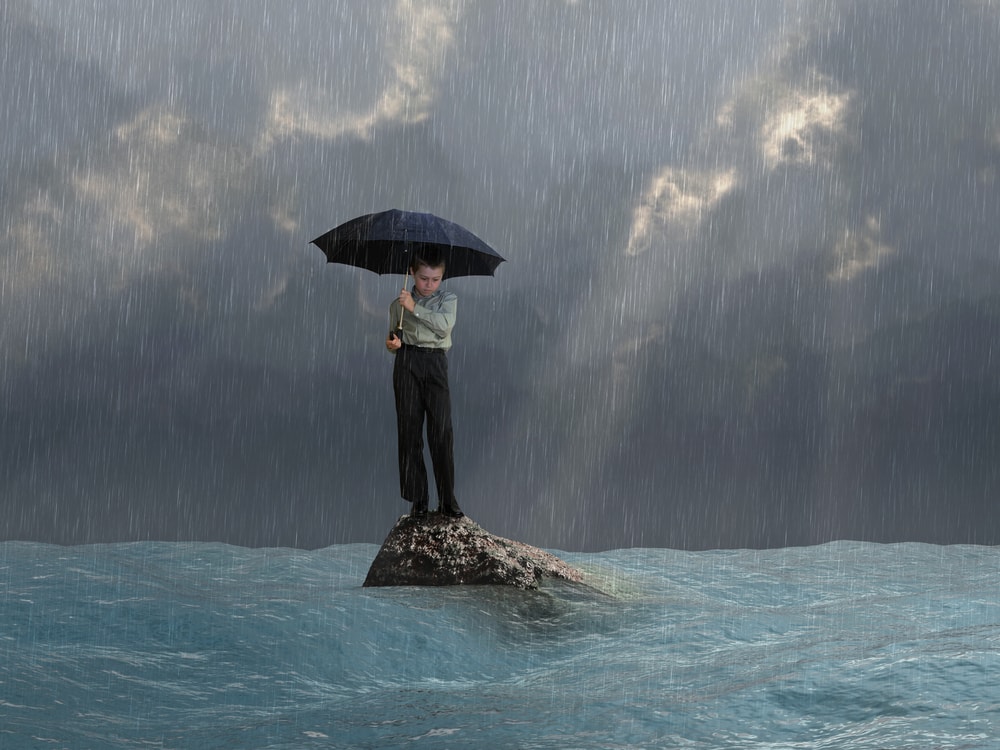As you happily shop at the grocery store, pushing a wheeled cart from one aisle to the next, how many people are smiling (or smiling behind their face-mask)? How many wear blank stares? How many have sour facial expressions, or seem to be talking to themselves? If you answered, “a lot,” there’s a good chance some of your fellow shoppers may suffer from a mood disorder known as depression. Even in normal times, across North America, millions more are afflicted, too, beset by loneliness, irrational fears, and sense of isolation related to everyday tasks. During these difficult times, it is anticipated that depression and other mood difficulties are skyrocketing. At it best, depression restricts a person’s quality of life and ability to handle life’s major activities. At worst, depression can be devastating to individuals and families, destroying lives and relationships and at the extreme, suicide and death. Untreated depression is a serious condition. But there is hope and it can be successfully treated. Read on to learn more about depression and new, powerful treatments.
Global Facts
Depression is a global mood disorder that is non-discriminate in its reach. It has no prejudices, digging its mental claws as easily into a Wall Street banker in New York as it would into a street food vendor in Bangalore, India. Think of it as an equal opportunity disorder, happily afflicting people worldwide regardless of creed, race, politics, education, or socioeconomic status. According to the World Health Organization (WHO), depression affects at least 264 million people of all age groups and is described as “a leading cause of disability worldwide and is a major contributor to the overall global burden of disease.”
Types of Depression and Anxiety by The Numbers
Because depression affects so many people, it isn’t shocking when you see the numbers associated with specific disorders or phobias. Adolescents and adults are effected nearly equally for their respective age groups.
- Major Depressive Disorder (MAD) – This is the leading cause of disability in the U.S. for ages 15 to 44.3, according to the Anxiety and Depression Association of America. It affects nearly 7% of the U.S. population over 18 and normally appears at an average age of 32. MDD is more prevalent in women than in men.
- Persistent Depressive Disorder – This is a form of depression that may last for up to two years. It affects about 3.3 million U.S. adults. Sadly, only about 60% seek treatment.
- Generalized Anxiety Disorder – This kind of mood disorder affects nearly 7 million U.S. adults, with only about 43% receiving professional help. It’s more common in women, often existing along with Major Depressive Disorder.
- Panic Disorder – Affects more women than men, with about 6 million U.S. adults experiencing its symptoms each year.
- Social Anxiety Disorder – Affects about 15 million adults in the U.S., split equally between men and women. Perhaps most worrisome: Those who suffer from it report they experience the symptoms for more than 10 years before getting treatment.
- Specific Phobias – Most often begin in childhood around age 7 and affect 9 million U.S. adults, specific phobias can occur along with with Obsessive-Compulsive Disorder and Posttraumatic Stress Disorder.
- Obsessive-Compulsive Disorder – Typically begins to appear around age 19, with 25% reporting symptoms as young as 14 years old. It affects about 2.2 million U.S. adults, equally split between men and women.
- Posttraumatic Stress Disorder – This is not just for soldiers experiencing combat situations or others wracked by severe violence. Others who have experienced trauma of all kinds can experience PTSD. It affects about 7.7 million U.S. adults. Studies indicate that 65% of men and 45% of women who have suffered rape are effected by PTSD.
Results of a 2017 study by the National Survey on Drug Use and Health paint a sobering picture of depression in the U.S.:
- 3 million U.S. adults older than 18 reported experiencing at least one “major depressive episode” in the past year.
- Nearly 11 million U.S. adults 18 or older reported at least one major depressive disorder with severe impairment.
- Of those reporting one or more episodes, 65% received care that included treatment from a mental health professional and a prescribed medication to treat symptoms. The other 35% did not receive treatment of any kind, and about 6% received medication only.
- For adolescents between 12-17, about 3.2 million reported experiencing at least one major depressive episode the previous year. More adolescent females (20%) reported episodes compared to adolescent males (6.8%).
- Nearly 2.3 million U.S. adolescents between 12-17 reported at least one major depressive disorder with severe impairment in the previous year, about 9.4% for this age group.
- For adolescents reporting one or more episodes, 17.9% received care that included treatment from a mental health professional and a prescribed medication to treat symptoms. About 19.6% received care from a mental health professional only, with the least common form of treatment being medication only at 2.4%.
Help is Available
Depression is a serious mood disorder affecting nearly 300 million people, with perhaps millions of others who go undiagnosed due to cost, lack of treatment options, or social stigma. If you think you or a loved one is suffering from depression, a doctor or therapist can offer diagnosis and explain available treatment options, including innovative new therapies such as ketamine treatment.
Ketamine for Depression Treatment
Ketamine has been found to provide profound and rapid relief of depression and anxiety in most patients. Used for decades across the globe as an anesthetic, ketamine has recently been discovered by institutions like Harvard, Yale, and the NIH who are calling ketamine an important and innovative new tool for depression and anxiety treatment. Research shows that up to 75% of patients can find relief from their symptoms of depression and anxiety after a series of IV ketamine infusions. For more specific information on how ketamine can help, please call our clinic and schedule a free discovery consultation. We can explain how ketamine works (totally different than other medications), and help you decide if ketamine may be right for you.
If you or a loved one is struggling with depression, we invite you to reach out to us today for a free discovery consultation to learn more about this new treatment alternative.



